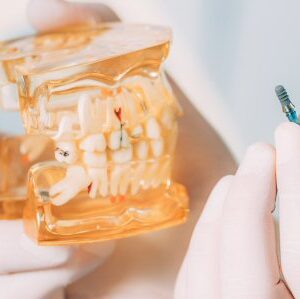Dental Implants

People who have lost their teeth may be too self-conscious to smile or speak. Furthermore, biting abnormalities induced by tooth loss can negatively impact eating patterns, leading to secondary health issues such as malnutrition. Dental implants, by replacing missing tooth roots, give clients the power and stability they need to eat all of their favorite foods without difficulty chewing. They also aid to stimulate and preserve jaw bone, avoiding bone loss and supporting face features.
Types of Dental Implants
Over 60 firms produce dental implants and/or the materials required to make the restorations that go on top of them. As a result, dentists have a plethora of alternatives for determining the best treatment for unique patient needs. However, if you have an implant operation performed by one dentist and subsequently see another dentist for a repair, your new doctor may have limited familiarity with, or access to, the material components utilized by the previous dentist.
Dental implants are often classified based on the process used to insert them: two-stage or single stage.
- Two-Stage Implants: A two-stage technique entails surgery to insert the implant into the jaw bone and sew the gum tissue shut. A small surgery is performed many months after healing to implant an abutment and temporary repair.
- Endosteal (Endosseous) Implants: Endosteal implants are the most commonly used type for two-stage implant operations. They are placed in the jaw bone. Endosteal implants are used largely as an alternative to a bridge or removable denture. They come in screw (threaded), cylinder (smooth), and bladed varieties.
- Single-Stage Dental Implants: A single-stage treatment is surgically inserting a lengthier implant into the jaw so that it is on the jaw bone, with the top level with the gum tissue, and then closing (stitching) the gum tissue, leaving the implant healing cap visible. As a result, the abutment and temporary restoration can be placed after many months of healing without the need for small surgery to expose the head.
- Subperiosteal Implants: Subperiosteal implants are rarely, if ever, utilized today. They are placed on the jaw bone within the gum tissue, with the metal implant post exposed to retain the restoration. Subperiosteals were largely utilized to secure dentures in patients with low bone height.
